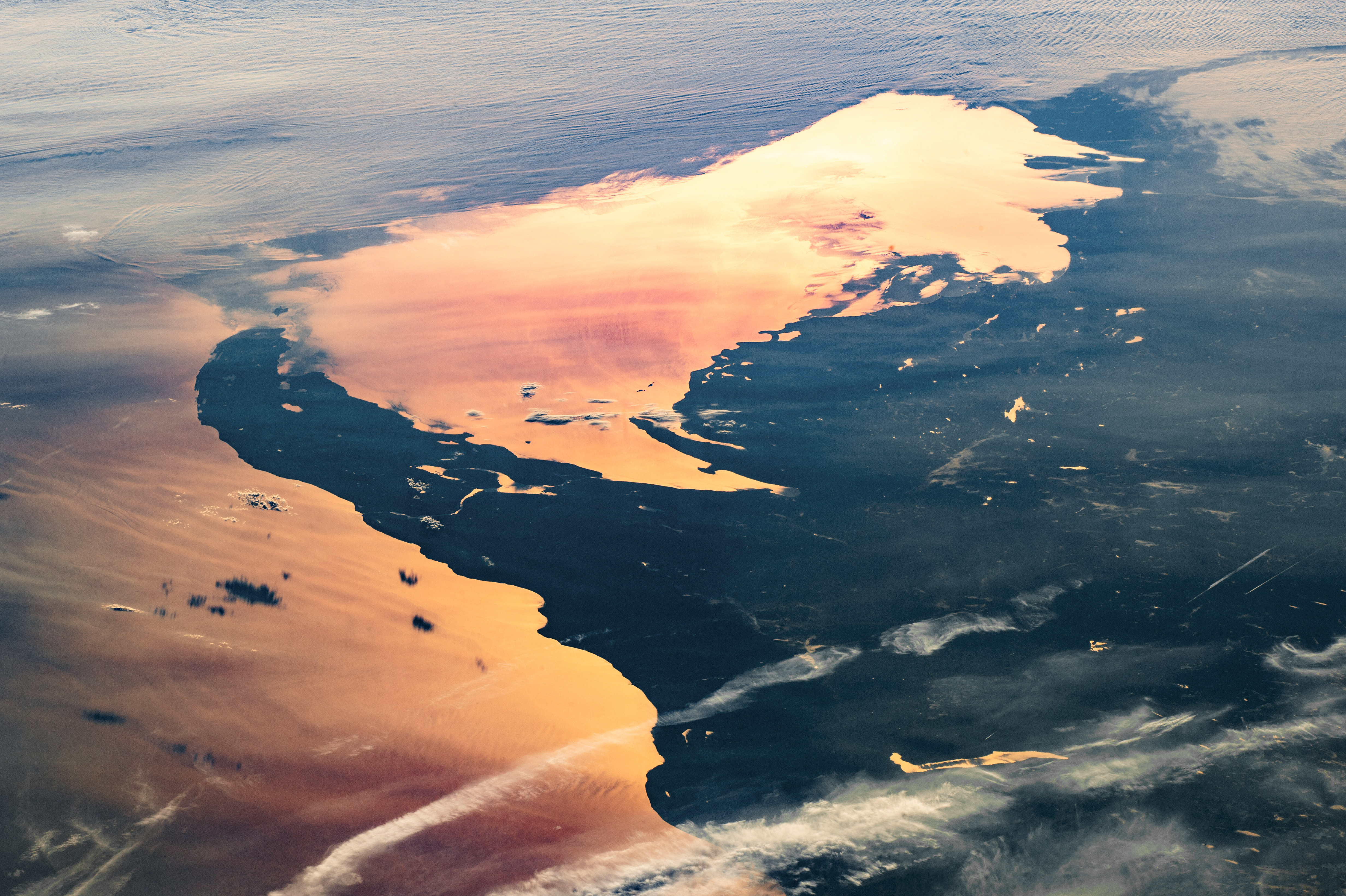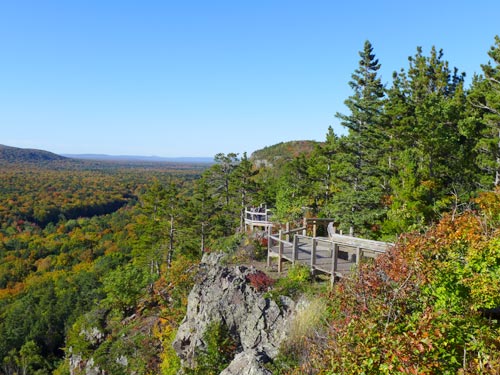[:ja]国際宇宙ステーションISSから撮影した米ミシガン州のアッパー半島です。朝のサングリントがスペリオル湖を照らし、半島のテーリング・ポンド(採鉱で不要となった鉱物と使用された水を流し込む池)も見えています。

アッパー半島は北にスペリオル湖、南にミシガン湖およびヒューロン湖と、五大湖のうちの3つの湖に囲まれています。同半島の面積は州土の約1/3を占めるにもかかわらず、そこには州の総人口のわずか3%が住んでいるのみです。気候や土壌が農業に適さないため、アッパー半島の経済は主に林業と鉱業で支えられてきました。1890年代から1920年代にかけては特に鉱業が盛んで「黄金時代」と呼ばれましたが、その後多くの鉱山は閉山しました。現在では州のほとんどは森林で覆われ、伝統の林業に加えて、自然環境と夏の涼しさを生かして発展した観光業が地域の経済を支えています。
地上の様子はこちらです。

参考文献: Shining Light on the Upper Peninsula (NASA Earth Observatory)
地球俯瞰画像を見る: LiVEARTH
[Earthview Wonders] No.668: Michigan’s Upper Peninsula🇺🇸
International Space Station ISS captured Michigan’s Keweenaw Peninsula. Morning sunglint silhouettes Lake Superior’s shoreline and highlights smaller lakes and mine tailings ponds on the land.

The Upper Peninsula is the northern of the two major peninsulas that make up Michigan State, U.S. The Upper Peninsula contains 29% of the land area of Michigan but just 3% of its total population. Residents are frequently called Yoopers and have a strong regional identity. Large numbers of French Canadian, Finnish, Swedish, Cornish, and Italian immigrants came to the Upper Peninsula, especially the Keweenaw Peninsula, to work in the area’s mines and lumber industry. The Upper Peninsula has long been known for its copper and iron resources, with native peoples mining Keweenaw copper as far back as 7,000 years ago. The economy today is based primarily on logging and tourism.
The local scenery on the ground is as follows.

Reference: Shining Light on the Upper Peninsula (NASA Earth Observatory)
See earthview photo gallery: LiVEARTH[:en][Earthview Wonders] No.668: Michigan’s Upper Peninsula🇺🇸
International Space Station ISS captured Michigan’s Keweenaw Peninsula. Morning sunglint silhouettes Lake Superior’s shoreline and highlights smaller lakes and mine tailings ponds on the land.

The Upper Peninsula is the northern of the two major peninsulas that make up Michigan State, U.S. The Upper Peninsula contains 29% of the land area of Michigan but just 3% of its total population. Residents are frequently called Yoopers and have a strong regional identity. Large numbers of French Canadian, Finnish, Swedish, Cornish, and Italian immigrants came to the Upper Peninsula, especially the Keweenaw Peninsula, to work in the area’s mines and lumber industry. The Upper Peninsula has long been known for its copper and iron resources, with native peoples mining Keweenaw copper as far back as 7,000 years ago. The economy today is based primarily on logging and tourism.
The local scenery on the ground is as follows.

Reference: Shining Light on the Upper Peninsula (NASA Earth Observatory)
See earthview photo gallery: LiVEARTH[:]